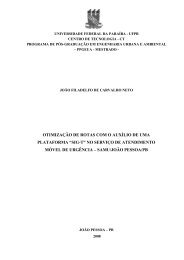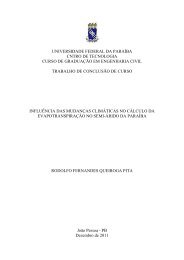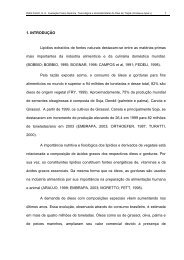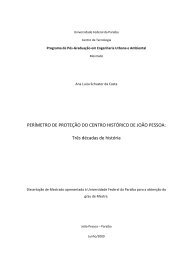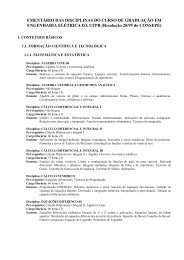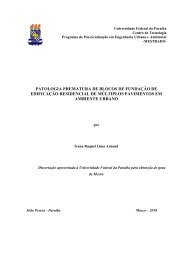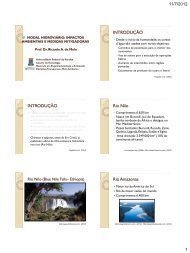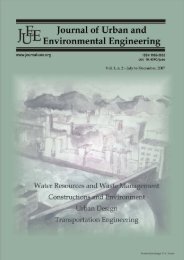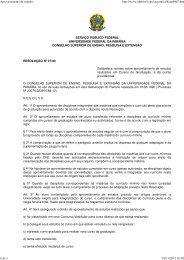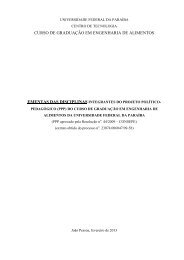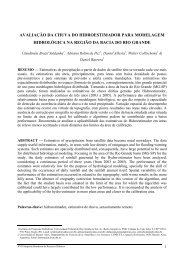editorial team
editorial team
editorial team
Create successful ePaper yourself
Turn your PDF publications into a flip-book with our unique Google optimized e-Paper software.
Martínez and Poleto<br />
3<br />
In the present study, the lead concentration present in<br />
20 composite samples of urban sediments collected at<br />
different points of the Tamandaré Basin (which drains<br />
into Guaíba Lake) and which present different soil uses<br />
was evaluated. Lead (Pb) concentrations were<br />
determined in different granulometric fractions of the<br />
sediments for the purpose of establishing a correlation;<br />
afterwards they were geographically represented<br />
through the use of a GIS, with values corresponding to<br />
the < 63 µm fraction, considered by diverse studies as<br />
that which presents the greatest heavy metal adsorption<br />
capacity.<br />
MATERIAL AND METHODS<br />
Study area<br />
The study area chosen is located between the center<br />
downtown area and the northern part of the city of Porto<br />
Alegre, capital of the state of Rio Grande do Sul, in the<br />
South of Brazil (Fig. 1).<br />
In accordance with the Koppen (1936) classification,<br />
the climate in the region is temperate, subtropical and<br />
humid. The study area is inserted within the urban<br />
Almirante Tamandaré sub-basin, which drains into Lake<br />
Guaíba and is georeferenced between the coordinates<br />
476 561.77 E; 6 676 956.05 S and 481 482.71 E;<br />
6 682 109.55 S. Within the study area, three areas<br />
representative of predominant soil uses in the city were<br />
chosen: industrial (3.0 km²), commercial (1.02 km²) and<br />
residential/commercial (0.83 km²), as represented in<br />
Fig. 2. The limits of the study area represent avenues of<br />
high vehicular traffic volume.<br />
Sediment monitoring<br />
During the month of June, composite samples of<br />
sediments accumulated from the streets of the study area<br />
were collected. The samples were the result of the<br />
Fig. 2 Study area.<br />
composition of various sub-samples of dry sediment<br />
collected in an area of approximately 200 m² for each<br />
point chosen (thus reducing the influence of point<br />
source pollution, making the samples more<br />
representative), as represented in Fig. 3 and following<br />
a methodology similar to that used by Poleto et al.<br />
(2009), Krčmová et al. (2009), Yetimoglu et al.<br />
(2008), Banerjee (2003), Charlesworth et al. (2003),<br />
Charlesworth & Lees (1999) and Deletic et al. (1997).<br />
Approximately 500 g of dry sediment were<br />
collected for each point (Poleto et al., 2009;<br />
Sutherland, 2003).<br />
Samples were collected using a portable vacuum<br />
without metallic parts and which facilitated the<br />
collection of samples without direct manual contact<br />
and which lead to sampling of finer particle fractions.<br />
Collected samples were deposited in plastic bags and<br />
refrigerated for later performance of physical and<br />
chemical analyses.<br />
Fig. 1 Geographical location of the study area.<br />
Fig. 3 Sample collection points.<br />
Adapted from: Poleto et al. (2009a).<br />
Journal of Urban and Environmental Engineering (JUEE), v.4, n.1, p.1-8, 2010



